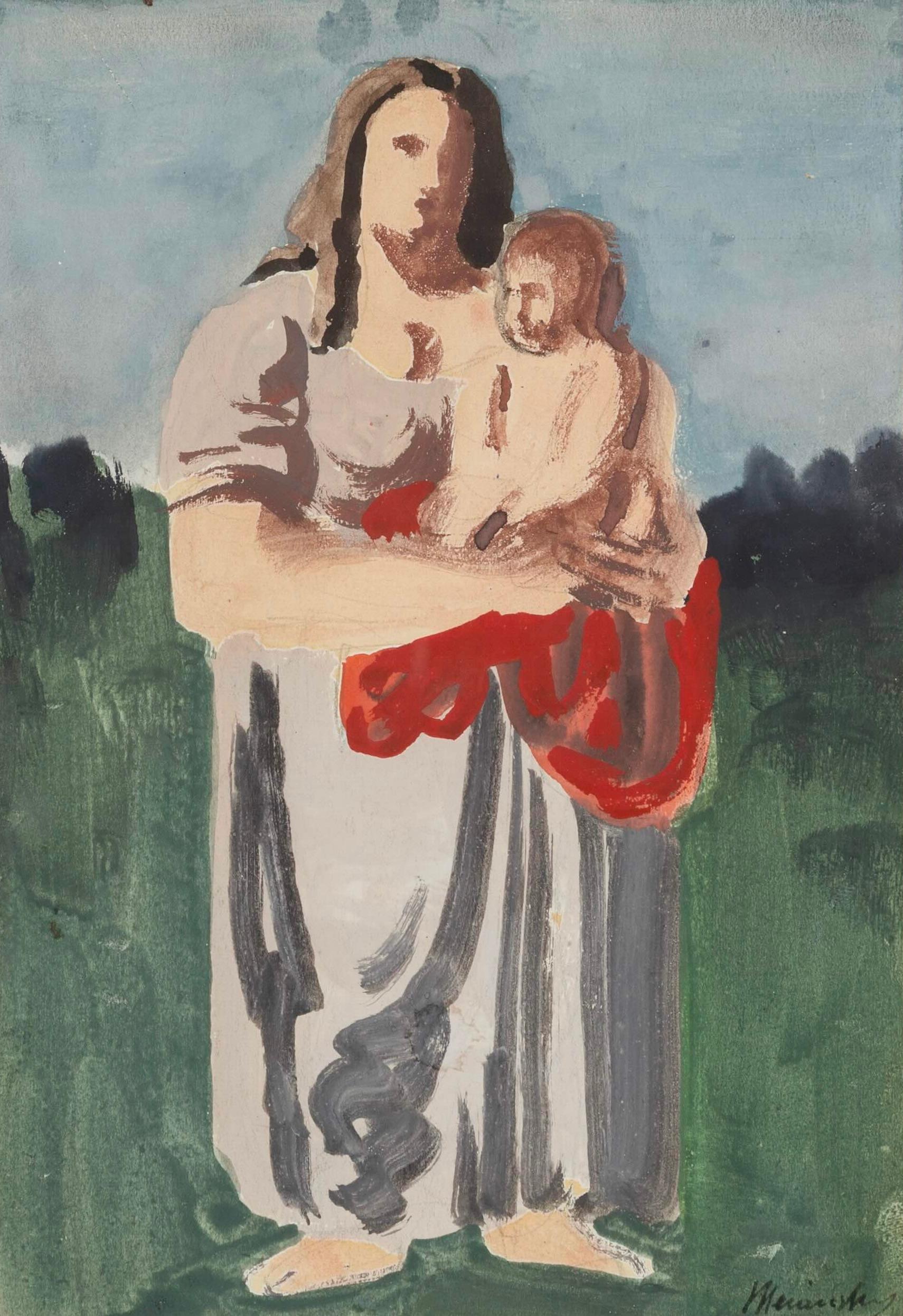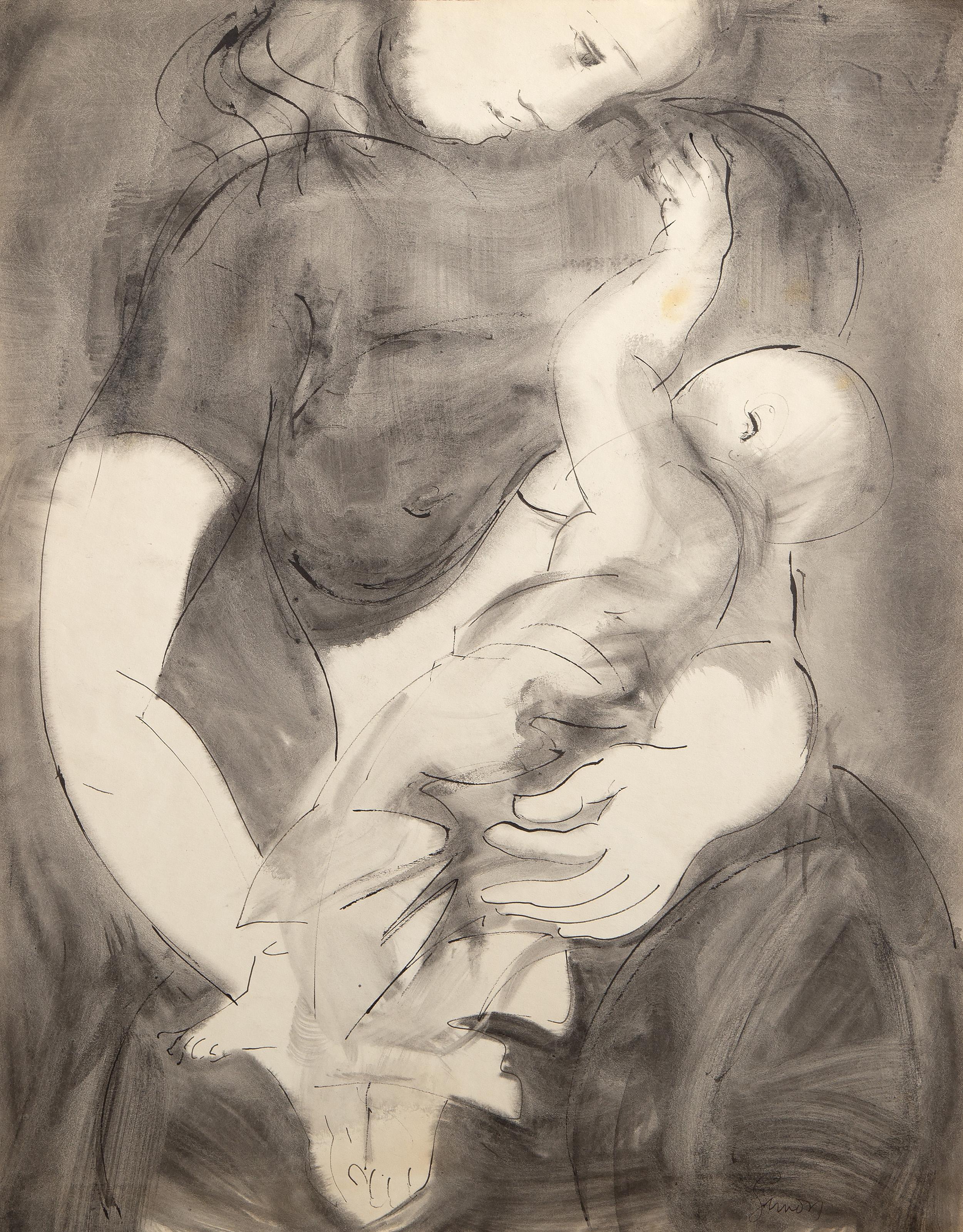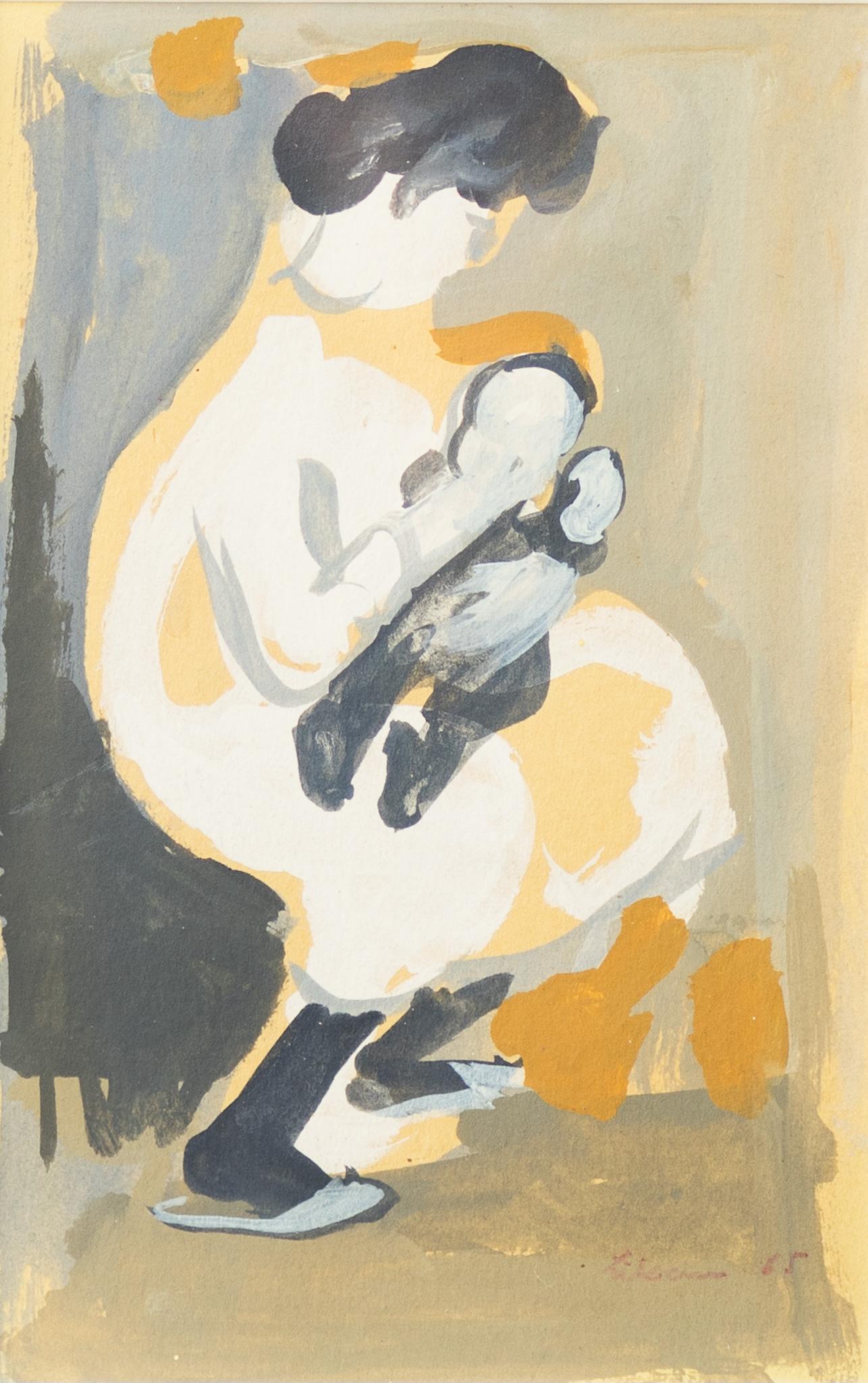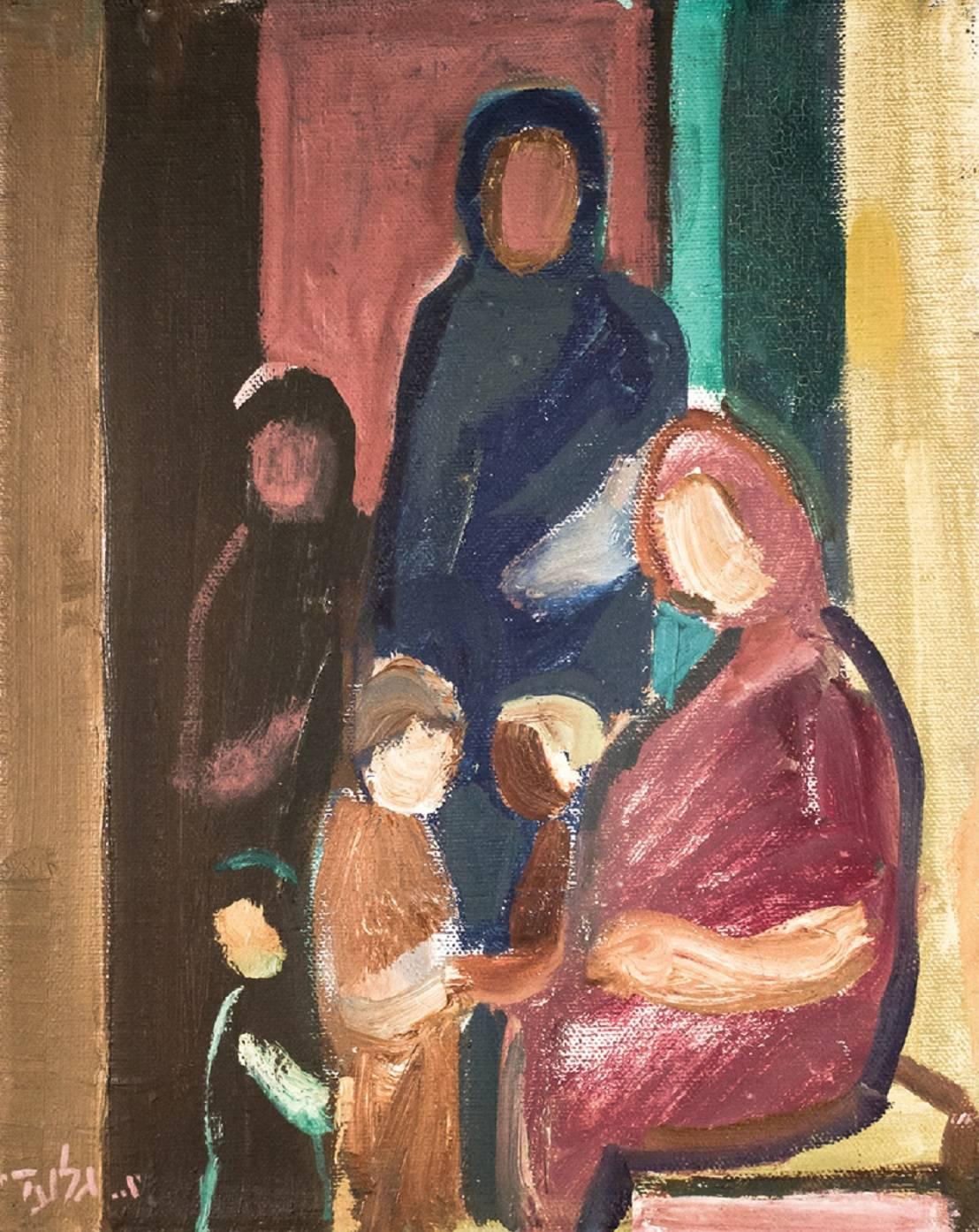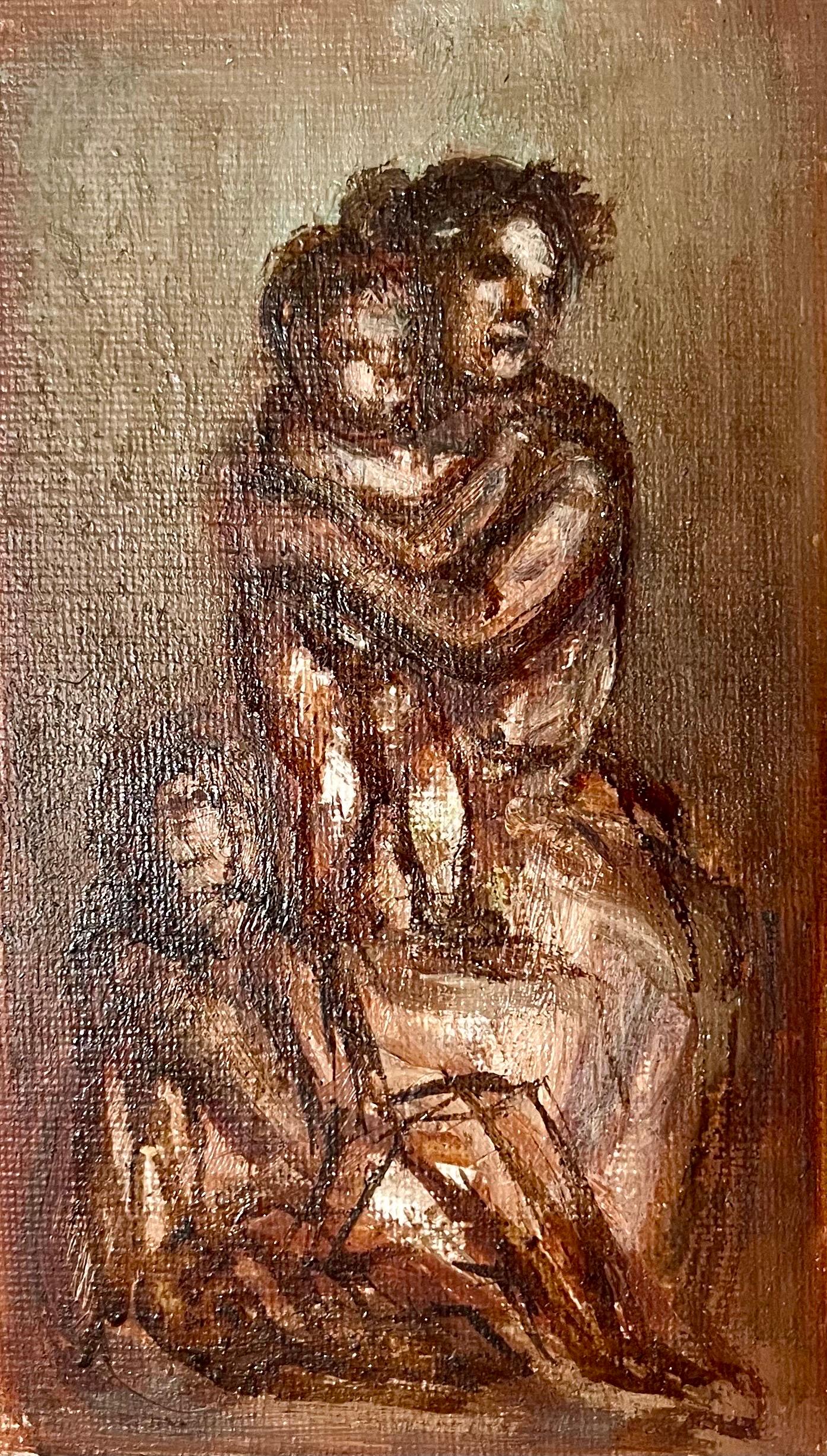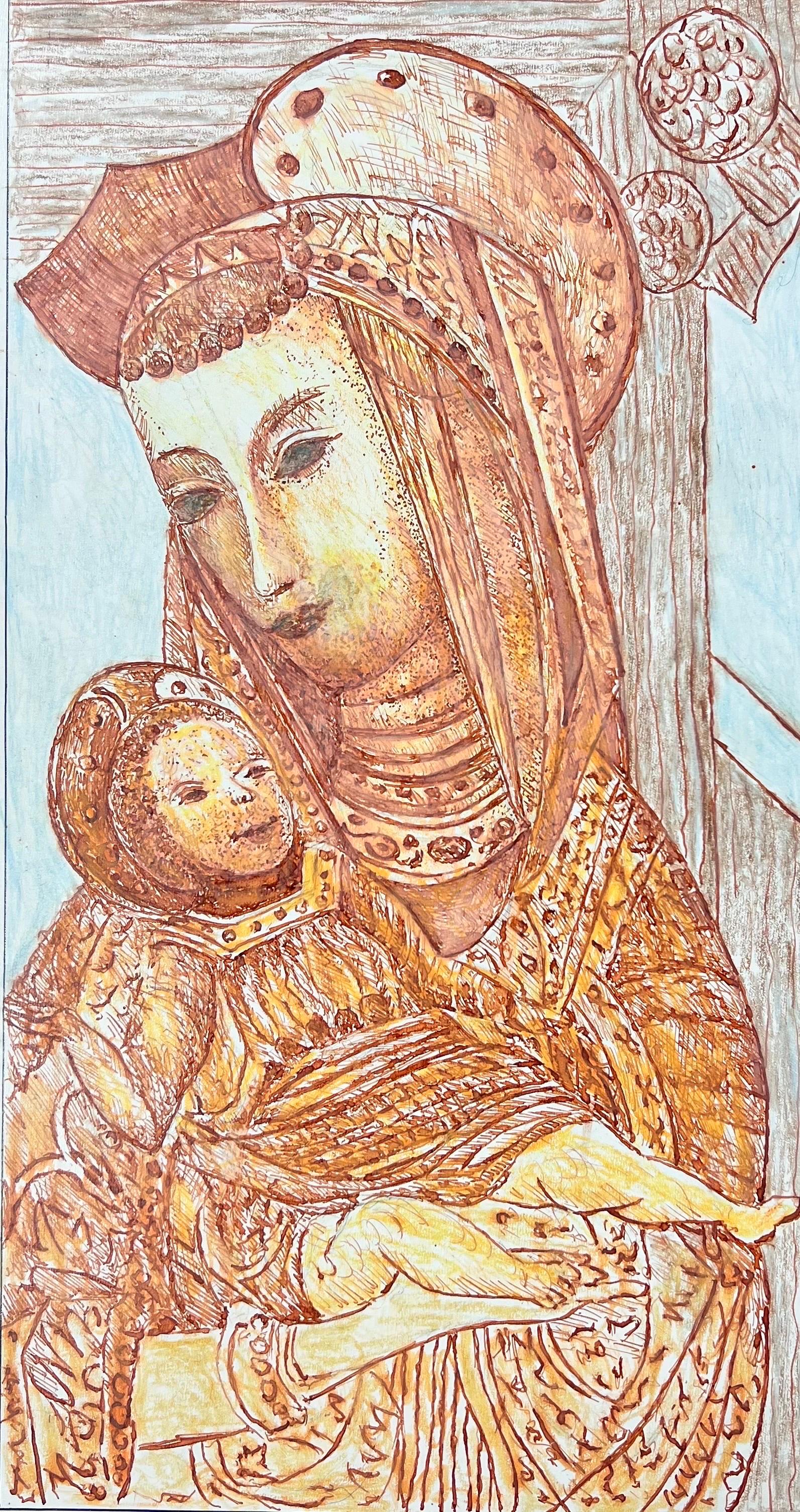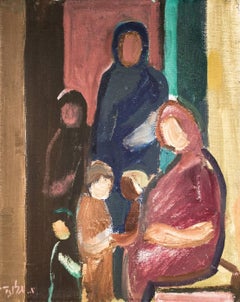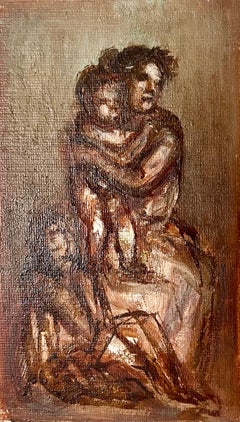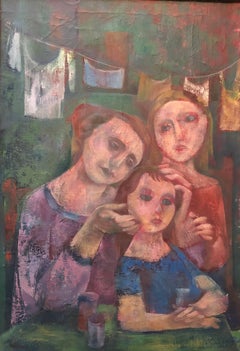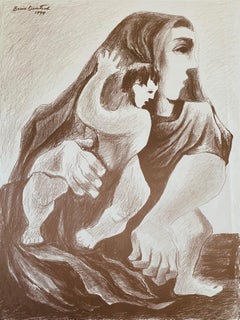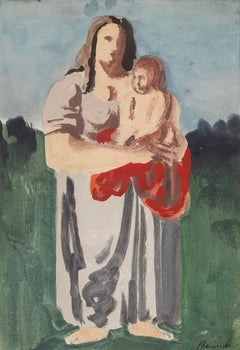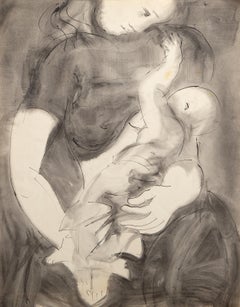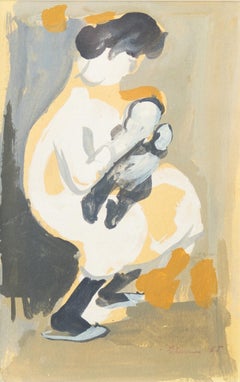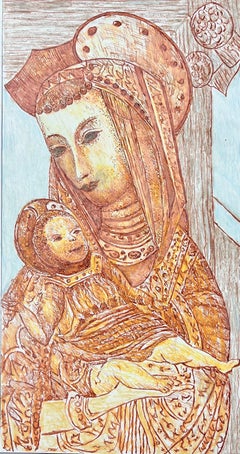Items Similar to Family of Three, Mid Century Gouache on Paper
Want more images or videos?
Request additional images or videos from the seller
1 of 7
Ivan KurachFamily of Three, Mid Century Gouache on Paper
$1,100
£830.14
€950.38
CA$1,551.36
A$1,703.20
CHF 888.57
MX$20,611.15
NOK 11,136.79
SEK 10,493.79
DKK 7,094.37
About the Item
Ivan Kurach (1909 – 1968) lived and studied in Italy.
Well known both in Europe and in the United States, his paintings are found in famous private collections and in museums all over the world. He spent most of his time between his studios of New York City and Milan, Italy. His work is another example of how very modern technique and sensitivity can freely fuse into the rigid rule of the most beautiful Italian pictorial tradition.
A soldier in World War II, he was a faithful interpreter of that tragic period; with gray and somber colors, with sad visions, he portrayed those days with force and meaning.
- Creator:Ivan Kurach (1909 - 1968, Swiss, Ukrainian)
- Dimensions:Height: 19.5 in (49.53 cm)Width: 15.75 in (40.01 cm)
- Medium:
- Movement & Style:
- Period:
- Condition:
- Gallery Location:Surfside, FL
- Reference Number:1stDibs: LU38211513942
About the Seller
4.9
Platinum Seller
Premium sellers with a 4.7+ rating and 24-hour response times
Established in 1995
1stDibs seller since 2014
1,810 sales on 1stDibs
Typical response time: 1 hour
- ShippingRetrieving quote...Shipping from: Surfside, FL
- Return Policy
Authenticity Guarantee
In the unlikely event there’s an issue with an item’s authenticity, contact us within 1 year for a full refund. DetailsMoney-Back Guarantee
If your item is not as described, is damaged in transit, or does not arrive, contact us within 7 days for a full refund. Details24-Hour Cancellation
You have a 24-hour grace period in which to reconsider your purchase, with no questions asked.Vetted Professional Sellers
Our world-class sellers must adhere to strict standards for service and quality, maintaining the integrity of our listings.Price-Match Guarantee
If you find that a seller listed the same item for a lower price elsewhere, we’ll match it.Trusted Global Delivery
Our best-in-class carrier network provides specialized shipping options worldwide, including custom delivery.More From This Seller
View AllFamily, Mother, Children, Modernist Israeli Oil Painting Aharon Giladi
By Aharon Giladi
Located in Surfside, FL
Aharon Giladi was born in 1907 in Russia. He studied in Leningrad and in 1929 came to Israel, where he was until 1949 a member of a kibbutz in the Jordan Valley.
His dynamic line...
Category
Mid-20th Century Modern Figurative Paintings
Materials
Oil
Simka Simkhovitch WPA Artist Oil Painting Family Mother, Kids American Modernist
By Simka Simkhovitch
Located in Surfside, FL
Simka Simkhovitch (Russian/American 1893 - 1949)
This came with a small grouping from the artist's family, some were hand signed some were not.
These were studies for larger paintin...
Category
1930s American Modern Figurative Paintings
Materials
Oil, Board
New York City Tenement Family Modernist WPA Era Oil Painting Wolins
By Joseph Wolins
Located in Surfside, FL
Subject: American Family
Medium: Oil
Surface: Canvas
Country: United States
In this painting, Joseph Wolins uses vibrant and complimentary colors and broken brushwork.
Joseph Wo...
Category
20th Century American Modern Figurative Paintings
Materials
Canvas, Oil
Lithuanian Artist Colored Lithograph Mother And Son - Boris Deutsch
By Boris Deutsch
Located in Surfside, FL
Boris deutsch was born in krasnagorka lithuania june 4 1892 died in los angeles 1978.Entered the polytechnic school in riga 1905.School of applied arts berlin 1912. Settled in l.A. 1...
Category
20th Century Modern Figurative Prints
Materials
Etching
Mid Century Mothers, Children Oil Painting Frank Kleinholz WPA Era NYC Tenements
By Frank Kleinholz
Located in Surfside, FL
Frank Kleinholz (Brooklyn, 1901 - 1987)
Mothers with children oil on canvas painting
Frame: 27 X 23
Image: 17.75 X 13.75
Born in Brooklyn, New York, Frank Kleinholz was a painter b...
Category
20th Century Abstract Figurative Paintings
Materials
Canvas, Oil
Lithuanian French Ecole de Paris Judaica Oil Painting Refugee Family
By Jacques Koslowsky
Located in Surfside, FL
Expressionist Realistic portrait of a Jewish refugee family World War II era by Lithuanian French Jewish artist. Here the artist conveys a sense of quiet grandeur through the eyes of...
Category
20th Century Realist Portrait Paintings
Materials
Oil, Board
You May Also Like
Mother and Child, 1950 - Gouache Painting with Mother and Baby Figures
By Bernard Meninsky
Located in Kingsclere, GB
Bernard Meninsky was a painter of figures and landscapes in oils, watercolour and gouache. He was born in 1891 in Karotopin, the Ukraine, of Jewish parents; brought to England six we...
Category
1950s Figurative Paintings
Materials
Gouache
Mother & Child, Modern Gouache and Graphite on Paper by Sidney Simon
Located in Long Island City, NY
Sidney Simon, American (1917 - 1997) - Mother & Child, Year: circa 1960, Medium: Gouache and Graphite on Paper, signed lower left, Size: 23.75 x 18.75 in. (60.33 x 47.63 cm)
Category
1960s Modern Nude Drawings and Watercolors
Materials
Gouache, Graphite
Mother and Baby Watercolor
Located in Austin, TX
By Gustav Likan
8" x 5" Watercolor on Paper
Framed Size: 15.75" x 12.5"
A mother holding a and comforting her baby.
1965
This piece is part of Likan's series depicting his wife Bar...
Category
1960s Modern Figurative Drawings and Watercolors
Materials
Watercolor, Archival Paper
1950's Modernist/ Cubist Painting - Mother and Child Figures
By Bernard Labbe
Located in Cirencester, Gloucestershire
French Figure
by Bernard Labbe (French mid 20th century)
original gouache on paper, mounted on card
size: 17 x 11.5 inches
condition: very good and ready to be enjoyed
provenance: t...
Category
Mid-20th Century Modern Figurative Paintings
Materials
Gouache
Family Consultation - Drawing by Mino Maccari - Mid 20th Century
By Mino Maccari
Located in Roma, IT
Family Consultation is an original China Ink and Watercolour realized by Mino Maccari in mid-20th century.
Good condition on a yellowed paper.
Hand-signed by the artist with pencil...
Category
Mid-20th Century Modern Figurative Drawings and Watercolors
Materials
Watercolor, Ink
Mid-Century Modern Figural of Two Women and Child by Harold Kitner Kent State
Located in Soquel, CA
Expressive Mid-Century figural painting of two women and child in pastel hues by Harold Kitner (American, 1921 - 2004).
Image, 33"H x 48"W
Walnut frame, 34"H x 49"W x 2"D
Harold Kitner was born on May 18, 1921 in Cleveland, Ohio and was the son of Isaac and Frieda Kitner. He obtained his MA from Case Western Reserve University in 1947. Kitner was a postgraduate from Cleveland Institute, Ohio University, Cleveland College, Washington and Lee University. He obtained his Doctorate from Kent State University. Exhibition: Harold Kitner - Active / Figure / Exaltation at Kent State School of Art Gallery in Kent, Ohio in 2014.
Harold Kitner taught for over 30 years at the Kent State University School of Art.
Harold Kitner began teaching art and art history at Kent State University in 1947. During his career, he served as Director and Chairman of the Fine Arts Division. Kitner played a significant role in creating the Art School’s core program, organizing the Kent State Arts Festival, and the Blossom Festival School. He also served as President of the Kent chapter of the American Association of University Professors, and was an art critic for the Akron Beacon Journal. In 1967, Kitner became Kent State University’s first Faculty Ombudsman, officially titled Dean for Faculty Counsel. He held this position until 1974. At the time of the Kent State shootings, Kitner’s position as Ombudsman meant that he was involved in many of the decisions regarding University administration in the weeks and months following the Kent State shootings. Kitner began a partial retirement in 1980, and left Kent to become the director of the Institute of the South Florida Art...
Category
1950s Modern Figurative Paintings
Materials
Masonite, Oil
$2,000 Sale Price
20% Off
More Ways To Browse
Italian Soldiers
Tennis Player
Double Bass Vintage
Fisherman Painting Oil
The Annunciation
1990s Oil Paintings
Oil Painting Reading
Woman Painting Dress
Hungarian Prints
Vintage Haitian Art
Israeli Modern Paintings
Peter Max Framed
Antique Old Painting
Walking Woman
Vintage Advertisement Art
17th Century Painted Panels
Bee Painting
Large Abstract Figurative Art
